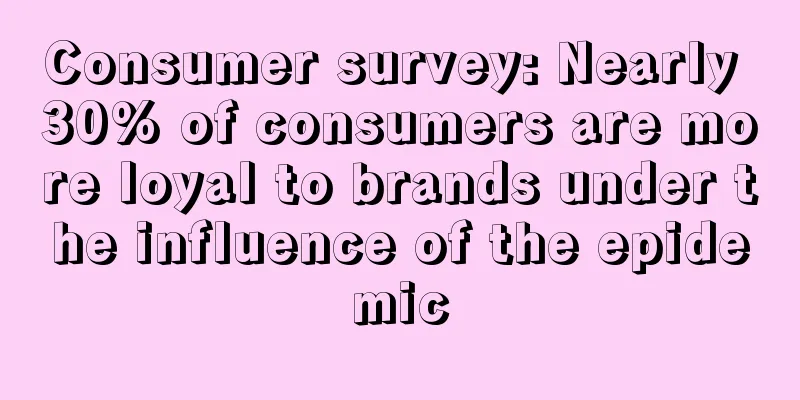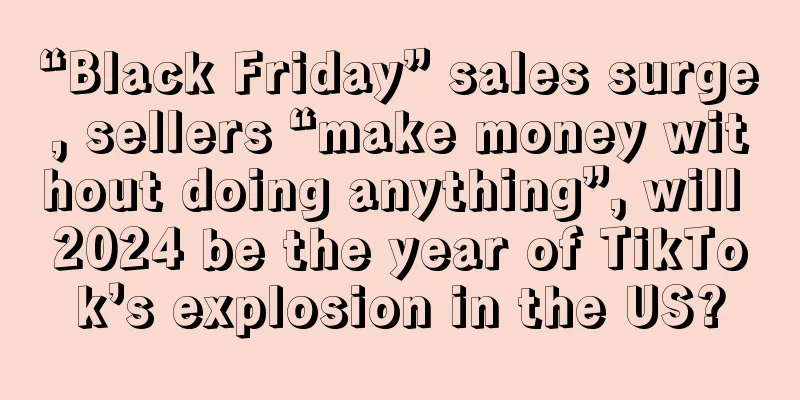Consumer survey: Nearly 30% of consumers are more loyal to brands under the influence of the epidemic

|
Yotpo surveyed 3,800 consumers in the U.S., U.K. and Australia last year, spanning Gen Z, Millennials, Gen X and Baby Boomers. Survey data shows that consumer loyalty changes are actually on the rise under the influence of COVID-19. Here are some of the main findings. 1. Respondents are more brand loyal
When asked about the changes in their brand loyalty compared to 2019, 26.4% of respondents chose "more", while the number of respondents who chose "less" remained stable at around 13%. 2. The increase in brand loyalty is attributed to the impact of COVID-19
COVID-19 has had a significant impact on consumer loyalty and purchasing behavior . Nearly 30% of respondents ( and 36.3% of Gen Z ) said they are more loyal to brands during this difficult time to help and support them. Compared to the past, consumers now view their relationship with brands not just as a transactional exchange , but have more emotional investment in the brands they like and are more likely to spend more on their favorite brands . 3. Respondents are loyal to more brands
The proportion of respondents who are completely unloyal to a brand dropped from 5.6% to 2.7%, and the proportion of respondents who are loyal to 1-5 brands dropped from 59.7% to 54.7%. The proportion of respondents loyal to 6 to 10 brands increased from 26% to 31.1%, while the proportion of respondents loyal to 11 to 20 brands (6.2% to 8%) and 20+ brands (2.5% to 3.6%) also increased. 4. What would respondents do for a brand they are loyal to?
When asked what actions they would be willing to take for a brand they are loyal to, nearly 68% of 2020 respondents said they would join a brand’s loyalty / VIP program, up from 59.8% in 2019. Likewise, those willing to spend more on a brand if a cheaper alternative existed surged from 34.5% in 2019 to 56% in 2020. 5. How brands can cultivate customer loyalty
First, as many as 84.3% of respondents prefer to be loyal to brands that are consistent with their values, so brands can convey their brand voice and values in a variety of ways .
Secondly, as can be seen from the above figure, "getting sales first" (42% to 60.1%) and "getting new products first" (30.3% to 50.8%) have both increased significantly, and "tailored offers and suggestions" have also increased from 32.7% to 38.9%. Sellers can also add the above elements when formulating loyalty programs. In summary, the increase in customer loyalty during the epidemic is welcomed by sellers, but it is also undeniable that consumers face more shopping options. In 2021, sellers should focus on building their core competitiveness and continue to establish emotional connections with customers. Customer Loyalty brand epidemic |
Recommend
What is Eastbay? Eastbay Review, Features
Eastbay is the largest online sports shoe retaile...
Valuation reaches 4.4 billion euros! Germany's About You is about to go public
Foreign media reported that Germany 's About ...
What is Shenzhen Cross-border E-commerce Association? Shenzhen Cross-border E-commerce Association Review, Features
Shenzhen Cross-Border E-Commerce Association (Eng...
Australia delivered a record 21 million parcels in November, with fashion accounting for the largest proportion!
Australia Post said November 2021 was "the b...
The "aftermath" of Brexit: Rising cross-border online shopping costs have a big impact
According to a survey by the International Postal...
Russian cross-border giants reduce commissions for "hundred-dollar products"! 80% of products will benefit
Yesterday, Ozon, one of Russia's largest cros...
A large number of accounts have been closed, and some people have been arrested! There are many cross-border scams waiting to be exposed...
There are many cross-border risks waiting to expl...
What is Deyida German Warehousing? Deyida German Warehousing Review, Features
Deyida German Warehousing is based in Germany, wit...
What is saveritemedical? saveritemedical Review, Features
SaveriteMedical is New York's leading online r...
What is Wish All-Star Merchant Logo? Wish All-Star Merchant Logo Review, Features
Products that insist on using Level 1 and Level 2...
The 2021 US Black Friday network predicts that sales will exceed 10 billion US dollars in a single day!
According to eMarketer, a world-renowned market r...
Amazon’s financial report was released, with a loss of 3.8 billion US dollars in the first quarter!
As a giant in the cross-border e-commerce industr...
Shenzhen Dama founder is under investigation? Here is his latest response
Last Friday, Cross-border Communication issued an...
What is PerFee? PerFee Review, Features
PerFee is a South Asian e-commerce platform establ...
What is Privalia? Privalia Review, Features
Privalia is a Spanish online fashion store and fa...









